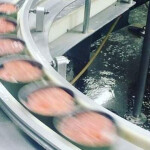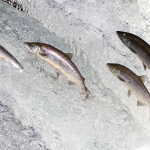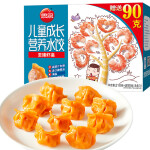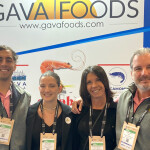A gap exists between what is true about a given seafood product and what consumers tend to know about it, according to Peter Handy, the president and CEO of Portland, Maine, U.S.A.-based company Bristol Seafood.
Bridging that expanse, Handy said, depends a lot on marketing, which has seen its role within the seafood industry transform in recent years as more consumers commit to brands with compelling stories to tell.
“[Marketing] is an acceptance that there’s a disconnect between what consumers know about a product and what is true,” Handy said during the National Fisheries Institute’s 2021 Global Seafood Market Conference (GSMC). “They might know half the story, or three-quarters of the story, and because of that, they’re not able to understand the full value-proposition of the product. But through marketing, you’re able to close that gap.”
Route to Market’s Jennifer Bushman, who has consulted with suppliers and organizations such as Kvarøy Arctic, Riverence, Pacifico Aquaculture, Verlasso, Love the Wild, Blue Ocean Mariculture, and Fair Trade USA, agreed that stories matter for seafood marketing – particularly those underlined with authenticity.
“If I’m thinking about my marketing, I’m going to first try to create authentic stories: what are those impacts that I make, what contributions, so that we’re truly becoming contributors in the process of putting food on the plate,” Bushman said at GSMC.
Consumers want to feel like they, too, are investing in something meaningful with their spending, Bushman said. That’s why shoppers strive to connect “with brands that have that sense of purpose and that clear direction,” she said, and once that bond is forged, the ultimate marketing goal can be achieved: brand loyalty.
Amid the COVID-19 pandemic, consumers have been pledging brands with health and sustainability bona fides, Bushman said, which offers opportunities for seafood providers across the supply chain.
“Right now, what we’re seeing – and we’re seeing it across the board – is that sustainability denotes safety” in the eyes of the consumer, she said, a mindset that has given fish and seafood more prominence in regional households. Similarly, nutrition is also top-of-mind for consumers as they try to optimize their wellness.
“Our bodies are going through a lot, there’s a lot of threats,” Bushman said. Eating foods that offer “immunities to fight off what’s in the world, has become more important,” she said
Access to brand-building resources has broadened in some ways during the pandemic, Bushman said, noting that it hasn’t just been consumers engaging more online with various products and producers – those who inspire them, such as influencers, chefs, and other thought-leaders, have been doing the same thing. Sending samples to these stakeholders is a good investment, she said, even as vaccination rollouts continue to gain momentum.
“What we need to do is keep getting that fish and seafood out there. Send more samples than you’ve ever sent before, because all of that is an investment in the post-COVID era,” Bushman said. “We’ve got to create more stories, more access, more motivation, and that’s one of the benefits of the pandemic.”
Looking ahead, specifically at foodservice, Bushman said she expects to see kitchen concepts continue to morph.
“I think we know for sure that the shape of the kitchen is going to change,” she said, pointing to drive-thru concepts, ghost kitchens, concession kitchens, and others as models to watch. Where these types of kitchens arise, expect to see value-added products created to service them, Bushman said.
“If the dining room is smaller, but there’s more of an area to set up for delivery, let’s come up with products that are maybe fast scratches,” Bushman said. “For [seafood], it’s thinking about where can we get into the market that’s going to help the market where they sit, and those value-added products in foodservice will do that.”
Bushman said she anticipates that kitchen staffs will also begin to look different as the industry progresses.
“Those concession kitchens… building a program around those, there’s going to be a lot of future in that as we see more production needing to go out for delivery, for take-out, and as we see kitchen staffs get smaller,” she said.
When it comes to marketing engagement efforts, being creative online will prove key for the seafood industry moving forward, according to Bushman.
“We’re needing to think outside the box to be able to create that engagement and create those relationships outside of face-to-face meetings and event-driven marketing," she said. "How creative you get with that is going to determine your success."
Photos courtesy of Jennifer Bushman and Peter Handy







